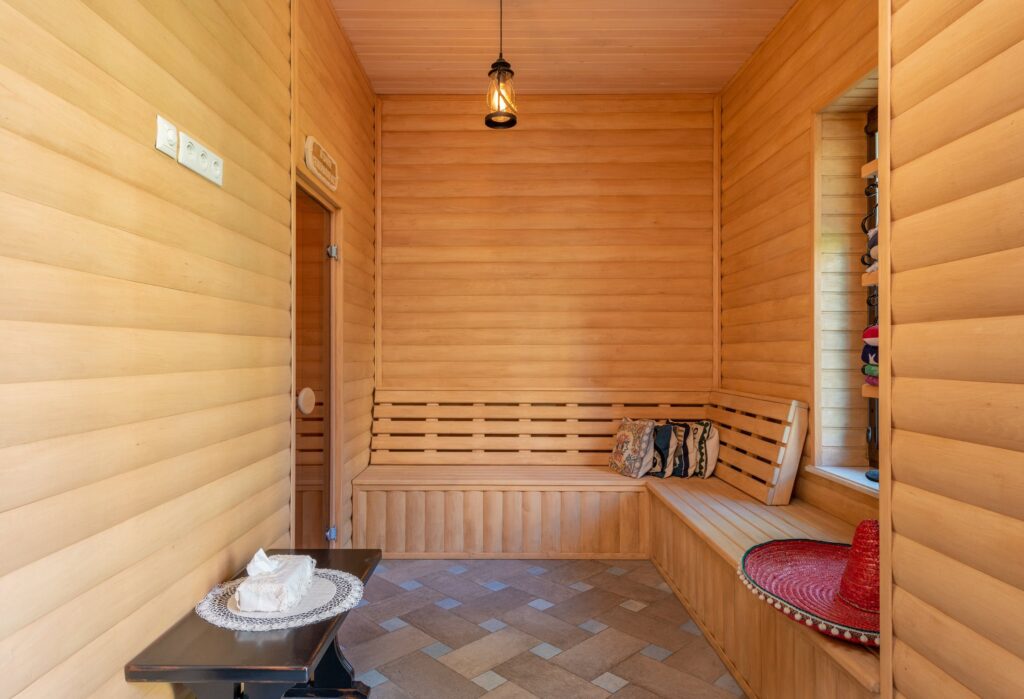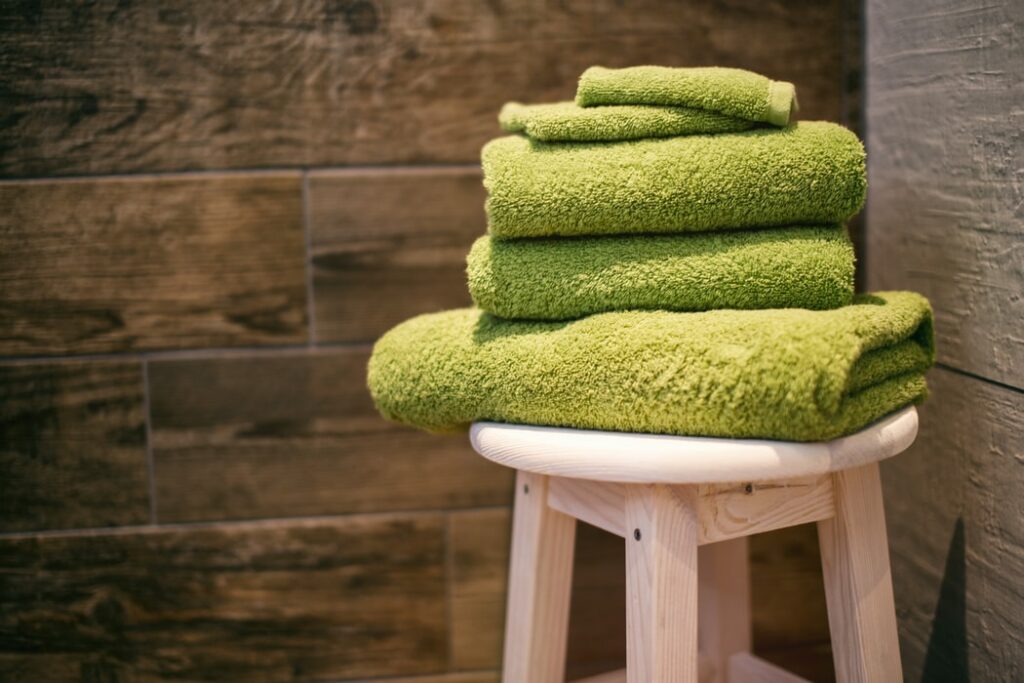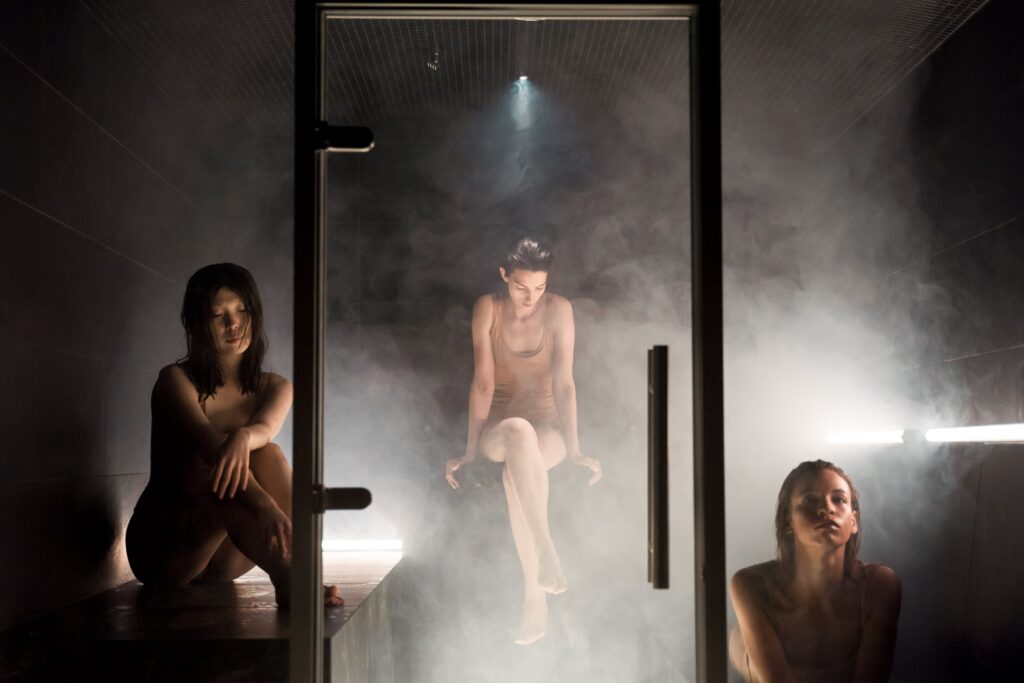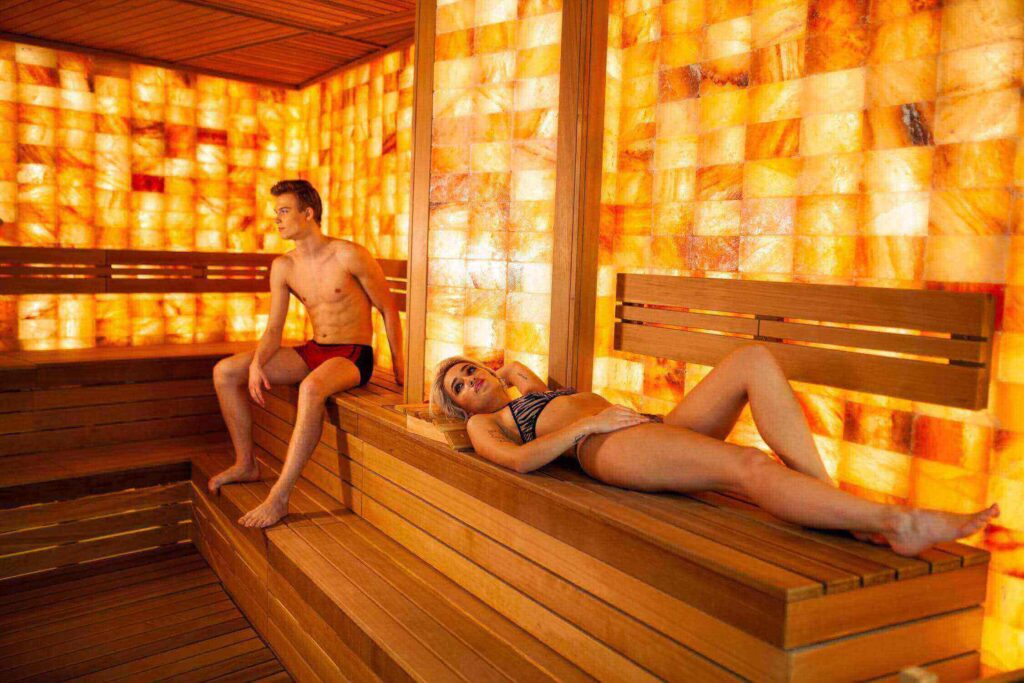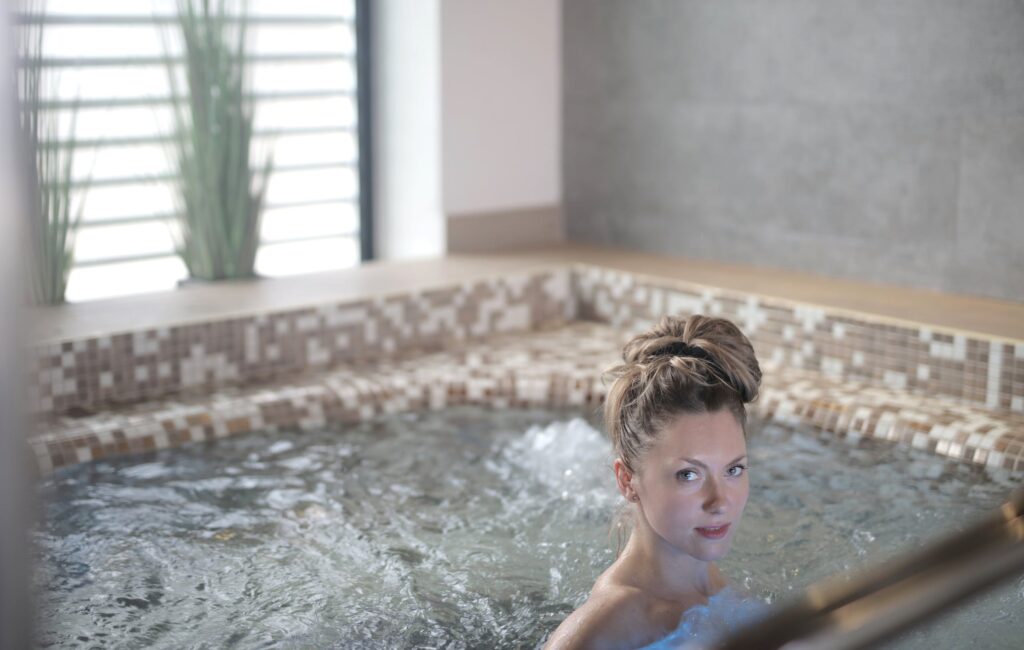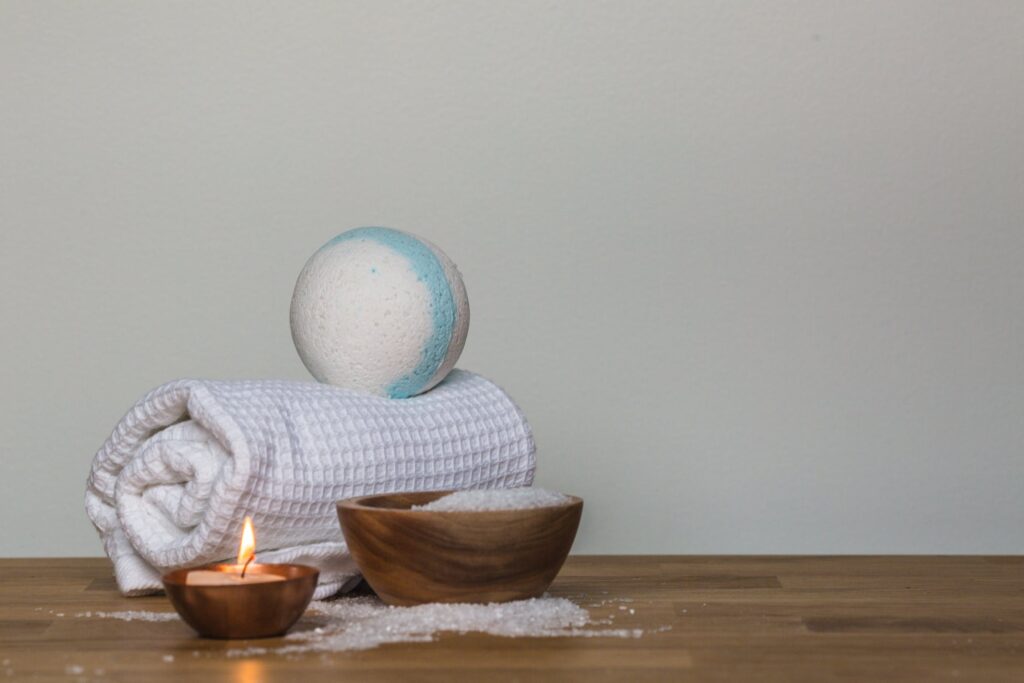Have you ever considered where in your house or backyard would be ideal for a portable sauna? OK, you're not the only one. Due to their convenience, portability, and numerous health benefits, portable saunas have exploded in popularity. However, the location matters greatly if you want to get the most out of your sauna time. Let's investigate the best installation locations to get the most out of your portable sauna's therapeutic benefits.
A good spot for your portable sauna would have plenty of room, good airflow, and proximity to an electrical outlet. The sauna's stability depends on its placement on a level, solid surface. Be sure to avoid spots likely to become wet or scorched by the sun, such as the corner of your bathroom or a quiet nook in your yard. If you follow these guidelines, you'll be able to reap the full therapeutic benefits of your portable sauna wherever you choose to use it.
However, these are only some things to consider when establishing a portable sauna. We interviewed a specialist in wellness and holistic medicine to learn more about this topic and gain input from world-renowned sauna experts. A few professionals explain the science and best practices for sauna placement. Let's not waste any more time; follow a seasoned pro's advice as we seek to choose the best spot for your portable sauna.
The Best Way To Lay Out A Sauna.
You've come to the correct place if you've ever fantasised about enjoying the health benefits of a sauna session in the privacy of your own home. This post shows you how to build your sauna room from the ground up, considering your specific tastes and constraints. If you're a fan of saunas and want to bring this ancient practice into your own house, or if you're just curious about the concept, this comprehensive guide will help you with every step.
Where
A sauna may be set up in any place. For safety reasons, the only stipulation is that the ceiling height in the room where the sauna will be put must be at least 1,900 mm. The convenience of a nearby shower makes a sauna in the bathroom a popular installation spot. A portion of your patio, loft, or basement would make a great private spa.
How Big
Here are some approximate standards: compact Sauna rooms range in size from 1.2 by 1.5 metres (suitable for a couple) to 2.4 by 1.8 metres (ideal for a large family or group of friends). Offering a range of bathing temperatures is easier with split-level seating, a great option for families with young children. The temperature drops when the bench is lowered. Adjusting the heater's output based on the sauna's size is important. About 1 kilowatt (kW) is needed for every 1.3 square metres of sauna space. A larger output is needed for a sauna with large panes of glass, parts of walls inside the sauna with tiles, or any other heavy material.
Walls & Ceiling
Wooden panelling is the traditional (and best) material for the sauna's inside. Western Red Cedar is an excellent option because it is a rarest softwood species known for its warm hues, resilience, and energising resinous aroma. The wood panels need insulation to be put behind them. While a stone finish on some sauna walls can give a nice decorative touch, remember that the walls will get too hot to touch, and the sauna will take longer to heat up if you choose a dense, solid material.
Sauna Ventilation
When it comes to ventilation, simplicity is key. The classic "natural draught" principle calls for an air inlet through the wall under the sauna heater and an air outflow through the wall in the top diagonal corner.
Sauna Doors
You can opt for a cedar-lined, insulated door with a tiny window, a full-length glass door with a cedar frame, or a frameless glass door in your sauna. The sauna door might have a different exterior finish than the interior. The door to a sauna always opens outward.
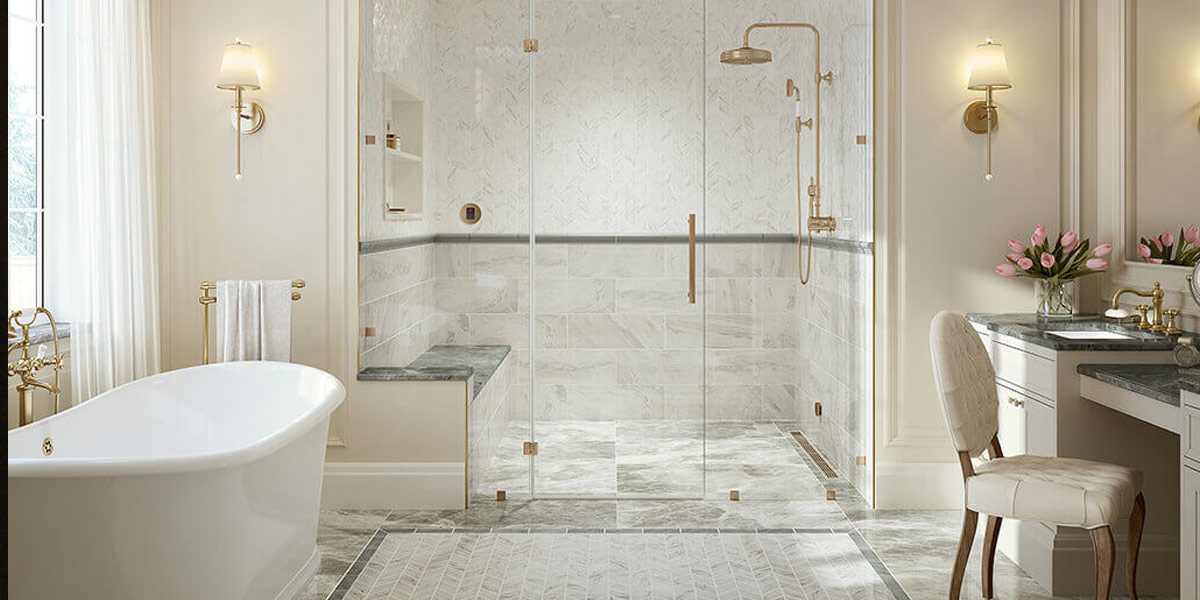
Sauna Floor
Ideally, you'd have the same flooring in the sauna as the rest of the room. A floor drain is a welcome addition to any sauna. This is not required. However, it facilitates cleaning in the sauna. Non-slip tiles or a wet-room covering that dries quickly and is easy to clean are ideal for the floor.
How High
The ceiling height ranges from 1.9 to 2.2 metres, which is sufficient. When it gets hot, the air rises and pools under the ceiling. The maximum allowed ceiling height is 2.40 metres.
What's The Point Of Installing A Home Sauna?
If you've ever enjoyed the relaxing heat of a sauna, you know why it's such a desirable amenity. Even while saunas have been a staple of Finnish culture for generations, they are quickly becoming a global phenomenon, and for good reason. Having a sauna in your home has numerous positive effects on your health and well-being. This blog post will discuss the benefits of owning a sauna at home.
A Wealth of Health Benefits
Saunas are more than just a place to unwind; they provide numerous health benefits. Increased blood flow, less muscle tension, and alleviated joint discomfort are all benefits of using a sauna. The cardiovascular system and the immunological system both benefit from regular sauna use. Heat can also make you sweat, eliminating waste and making you look and feel better overall.
Mental Wellness and Stress Relief
It's easy to let the stress of daily life take a toll on our emotional well-being. A sauna is a peaceful haven where one can rest from the stresses of life and gain mental clarity. Endorphins, the body's natural feel-good hormones, are released in response to heat and can make you feel relaxed and pleased. You can improve your health and stress levels by making sauna time a regular regimen.
Privacy and Convenience
The seclusion and ease of use of a home sauna are unparalleled. You no longer need to plan to visit a spa or gym; instead, you can relax in a sauna whenever you like. Whether you want to relax after a hard day at work or wake up your senses first thing in the morning, a private sauna at home lets you do it your way.
Social and Family Bonding
Saunas are great places for people to get together and relax. Envision spending time with loved ones in the sauna's soothing heat while listening to music and swapping stories. It's a chance to bond with loved ones and make memories that will last a lifetime.
Property Value and Aesthetic Appeal
Saunas improve your health and your home's look and worth. A sauna that has been thoughtfully created might become a showpiece in your home.
How To Find The Perfect Sauna For Your House?
Outdoor vs Indoor

- Outdoor Sauna: Every outdoor sauna must have a designated area. Those with access to a backyard can benefit greatly from installing an outdoor sauna, especially if a pool is nearby for a refreshing plunge afterwards. Space, accessibility to electricity, privacy, and the possibility of sheltering the sauna from the elements are all factors to consider when planning an outdoor sauna.
- Indoor Sauna: Home infrared saunas are gaining popularity because of the convenience of having a spa-like experience without leaving your house. It's possible to install a sauna indoors even if you don't have a lot of extra room. The versatility of an indoor sauna makes it a great choice for any home, whether you want to tuck one into a spare bedroom or dedicate an entire room to it.
Large vs Small
- Large Sauna: The ultimate indulgence, large saunas necessitate dedicated floor space. Dedicate the additional room if you anticipate more than three users at once or intend to use the sauna for activities such as hot yoga. While a large sauna is most suited for an outdoor setting, it is possible to install one indoors, provided you have enough room.
- Small Sauna: Single-person or space-constrained environments benefit greatly from using a small sauna. Small saunas are highly adaptable due to their size, as they can be installed anywhere. You can squeeze at least a one-person sauna into a room measuring 4 feet by 4 feet. The health advantages of a sauna are the same regardless of sauna size. However, group sessions and hot yoga are out of the question in a small sauna. Can install one indoors if there is enough room.
Prebuilt vs Build-Your-Own
- Prebuilt Sauna: Prefabricated saunas are convenient for those who want to avoid the hassle of building their own. All the benefits of an infrared sauna without the hassle of setting one up. You can set up one of these saunas indoors or out, anywhere, with a level, sturdy surface and some airflow. Prefabricated saunas call very minimal set-up and can begin operating as soon as they are wired to a power source.
- Build-Your-Own Sauna: DIY sauna construction is always thrilling because you can make it look and function exactly how you want. Intricate calculations and precise measurements are required to ensure that one of these saunas will fit comfortably in your home. Creating a sauna in your house is a terrific way to add a spa-like atmosphere to your living space. Most people build their saunas indoors, typically in bathrooms or pool houses.
Considerations For Locating A Home Sauna
A home sauna is a great investment in your health and well-being and may help you create a relaxing haven without leaving your house. However, paying attention to where in your home this opulent feature will look best before installing it would be best.
Use Correct Flooring Materials
Exposed concrete, plastic, ceramic, or stone make for the best sauna floors if you're doing your construction. Sound and thermal insulation of the floor is recommended.
Position Near a Shower or Pool
People used to take icy plunges from the top of the sauna. If you want to experience that same sense of renewal following a sauna session, you can do it by leaping into a pool.
Have Enough Power
A 240-volt outlet is required for the operation of an infrared sauna. Plugging in a prefabricated home sauna should be relatively easy for indoor use, but consult an electrician if you have any doubts or problems.
Watch the Moisture Levels Carefully
It's important to prevent water from pooling near the foundation of your home sauna by installing proper drainage.
FAQs About Sauna
If you have any pre-existing medical conditions, especially related to cardiovascular health or heat sensitivity, consult with your healthcare provider before using a sauna. Saunas can elevate body temperature and may not be suitable for everyone, especially those with certain medical conditions.
The recommended temperature range for a portable sauna is typically between 100°F to 150°F (37°C to 66°C). However, personal preferences may vary, and some saunas may offer adjustable temperature settings. Always start with lower temperatures and gradually increase as your body acclimates to the heat.
While it is possible to set up a portable sauna in a garage, it is essential to consider ventilation. Garages may lack adequate ventilation, which can lead to a buildup of heat and humidity. If you plan to use your sauna in the garage, make sure to open doors or windows to ensure proper air circulation.
To maintain a hygienic and efficient sauna, wipe down the interior with a mild disinfectant after each use. Keep the heating elements and vents free from dust and debris. Refer to the manufacturer's instructions for specific cleaning and maintenance guidelines.
Using a portable sauna outdoors in hot weather is not recommended. The combination of high ambient temperature and the sauna's heat can be dangerous and lead to overheating. If you wish to use the sauna outdoors, choose a shaded area with moderate temperatures for a safe and enjoyable experience.
Conclusion
Portable saunas have gained popularity due to their convenience, portability, and numerous health benefits. However, location is crucial for maximizing the therapeutic benefits of a sauna. A good installation location should have ample room, good airflow, and proximity to an electrical outlet. The stability of the sauna depends on its placement on a level, solid surface, avoiding areas that may become wet or scorched by the sun.
A specialist in wellness and holistic medicine has interviewed experts to provide insights on the science and best practices for sauna placement. The best way to lay out a sauna is to consider your specific tastes and constraints. A compact sauna room can be set up in any location, with a ceiling height of at least 1,900mm for safety reasons. Compact sauna rooms range in size from 1.2 by 1.5 meters (suitable for a couple) to 2.4 by 1.8 meters (ideal for a large family or group of friends).
Wooden panelling is the traditional and best material for the sauna's inside, with Western Red Cedar being an excellent option. Insulation is essential, and walls should be insulated to prevent heat loss. Ventilation should be simple, with an air inlet through the wall under the sauna heater and an air outflow through the wall in the top diagonal corner.
Sauna doors can be cedar-lined, insulated, full-length glass door with a cedar frame, or a frameless glass door. The floor should have the same flooring as the rest of the room, and a floor drain is a welcome addition. Non-slip tiles or a wet-room covering that dries quickly and is easy to clean are ideal for the floor.
The ceiling height ranges from 1.9 to 2.2 meters, with a maximum allowed ceiling height of 2.40 meters. The benefits of owning a home sauna include increased blood flow, less muscle tension, and alleviated joint discomfort. Regular sauna use also benefits the cardiovascular and immunological systems, as well as the skin, making it easier to sweat and eliminate waste.
A home sauna offers numerous benefits, including mental wellness, stress relief, privacy, and convenience. It provides a peaceful haven for relaxation and mental clarity, releasing endorphins, which are the body's natural feel-good hormones. It also promotes social and family bonding, making it an ideal place for people to bond and create lasting memories.
To find the perfect sauna for your home, consider factors such as space, accessibility to electricity, privacy, and the possibility of sheltering the sauna from the elements. Large saunas require dedicated floor space, while small saunas are adaptable and can be installed anywhere. Prefabricated saunas offer the benefits of infrared saunas without the hassle of setting them up, while build-your-own saunas require intricate calculations and precise measurements to fit comfortably in your home.
When selecting a home sauna, consider the location in your home, using the correct flooring materials, and having enough power. Exposed concrete, plastic, ceramic, or stone are recommended for their sound and thermal insulation. Place the sauna near a shower or pool for icy plunges, and have enough power for infrared sauna operation. Consult an electrician if you have any doubts or problems.
Lastly, watch moisture levels carefully to prevent water from pooling near the foundation of your home sauna. Proper drainage is essential to prevent water from pooling near the foundation of the sauna. By considering these factors, you can create a relaxing and enjoyable home sauna that enhances your health and home's appearance.
Content Summary:
- Have you ever considered where in your house or backyard would be ideal for a portable sauna?
- Due to their convenience, portability, and numerous health benefits, portable saunas have exploded in popularity.
- However, the location matters greatly if you want to get the most out of your sauna time.
- Let's investigate the best installation locations to get the most out of your portable sauna's therapeutic benefits.
- A good spot for your portable sauna would have plenty of room, good airflow, and proximity to an electrical outlet.
- The sauna's stability depends on its placement on a level, solid surface.
- We interviewed a specialist in wellness and holistic medicine to learn more about this topic and gain input from world-renowned sauna experts.
- Let's not waste any more time; follow a seasoned pro's advice as we seek to choose the best spot for your portable sauna.
- You've come to the correct place if you've ever fantasised about enjoying the health benefits of a sauna session in the privacy of your own home.
- This post shows you how to build your sauna room from the ground up, considering your specific tastes and constraints.
- For safety reasons, the only stipulation is that the ceiling height in the room where the sauna will be put must be at least 1,900 mm.
- Adjusting the heater's output based on the sauna's size is important.
- A larger output is needed for a sauna with large panes of glass, parts of walls inside the sauna with tiles, or any other heavy material.
- Wooden panelling is the traditional (and best) material for the sauna's inside.
- When it comes to ventilation, simplicity is key.
- You can opt for a cedar-lined, insulated door with a tiny window, a full-length glass door with a cedar frame, or a frameless glass door in your sauna.
- The sauna door might have a different exterior finish than the interior.
- The door to a sauna always opens outward.
- Ideally, you'd have the same flooring in the sauna as the rest of the room.
- A floor drain is a welcome addition to any sauna.
- However, it facilitates cleaning in the sauna.
- Non-slip tiles or a wet-room covering that dries quickly and is easy to clean are ideal for the floor.
- Even while saunas have been a staple of Finnish culture for generations, they are quickly becoming a global phenomenon, and for good reason.
- Having a sauna in your home has numerous positive effects on your health and well-being.
- This blog post will discuss the benefits of owning a sauna at home.
- Saunas are more than just a place to unwind; they provide numerous health benefits.
- You can improve your health and stress levels by making sauna time a regular regimen.
- The seclusion and ease of use of a home sauna are unparalleled.
- You no longer need to plan to visit a spa or gym; instead, you can relax in a sauna whenever you like.
- Whether you want to relax after a hard day at work or wake up your senses first thing in the morning, a private sauna at home lets you do it your way.
- Saunas improve your health and your home's look and worth.
- Outdoor vs Indoor Outdoor Sauna: Every outdoor sauna must have a designated area.
- It's possible to install a sauna indoors even if you don't have a lot of extra room.
- The versatility of an indoor sauna makes it a great choice for any home, whether you want to tuck one into a spare bedroom or dedicate an entire room to it.
- While a large sauna is most suited for an outdoor setting, it is possible to install one indoors, provided you have enough room.
- Small Sauna: Single-person or space-constrained environments benefit greatly from using a small sauna.
- You can squeeze at least a one-person sauna into a room measuring 4 feet by 4 feet.
- The health advantages of a sauna are the same regardless of sauna size.
- However, group sessions and hot yoga are out of the question in a small sauna.
- Can install one indoors if there is enough room.
- All the benefits of an infrared sauna without the hassle of setting one up.
- You can set up one of these saunas indoors or out, anywhere, with a level, sturdy surface and some airflow.
- Prefabricated saunas call very minimal set-up and can begin operating as soon as they are wired to a power source.
- Build-Your-Own Sauna: DIY sauna construction is always thrilling because you can make it look and function exactly how you want.
- Creating a sauna in your house is a terrific way to add a spa-like atmosphere to your living space.
- A home sauna is a great investment in your health and well-being and may help you create a relaxing haven without leaving your house.
- Sound and thermal insulation of the floor is recommended.
- People used to take icy plunges from the top of the sauna.
- If you want to experience that same sense of renewal following a sauna session, you can do it by leaping into a pool.
- A 240-volt outlet is required for the operation of an infrared sauna.
- Plugging in a prefabricated home sauna should be relatively easy for indoor use, but consult an electrician if you have any doubts or problems.
- It's important to prevent water from pooling near the foundation of your home sauna by installing proper drainage.

